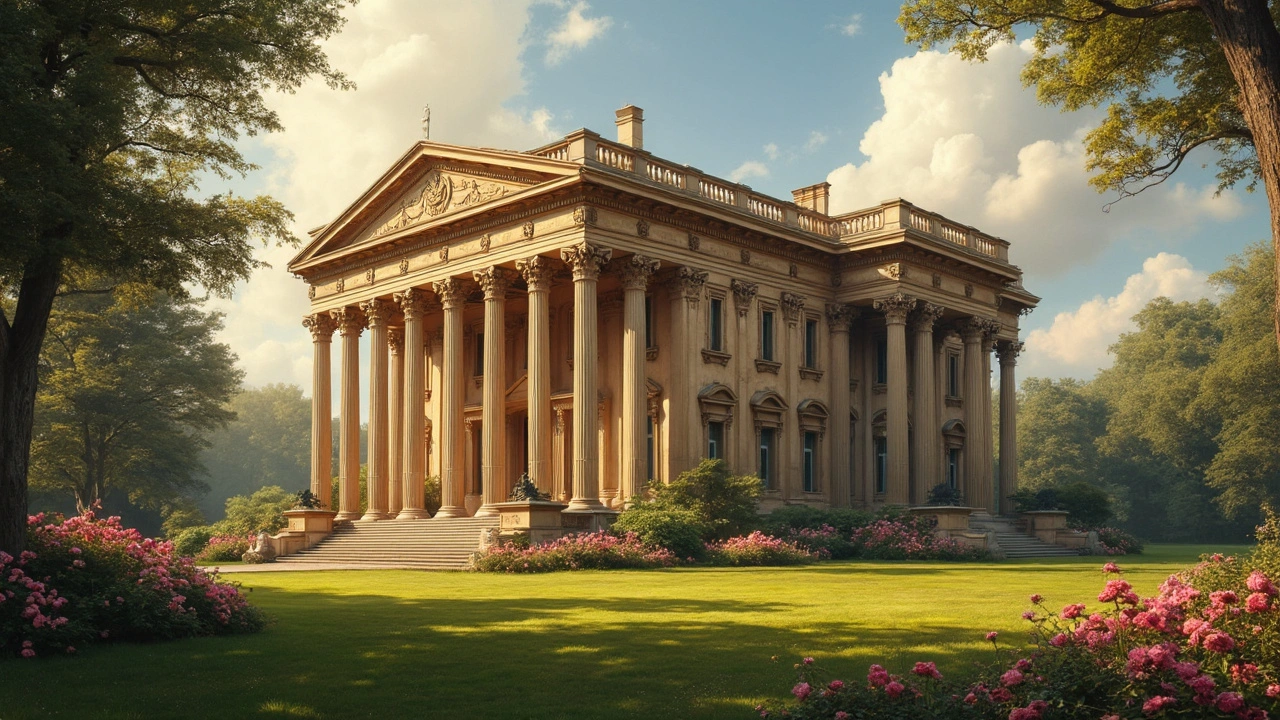Greek Revival Architecture is a style that draws inspiration from the classical architecture of ancient Greece. Popular in the 19th century, it features elements like tall columns, painted friezes, and symmetrical shapes. This architectural style is not only visually striking but also embodies a rich historical narrative. Greek Revival buildings can be found in many regions, notably in the United States, where they reflect the aspirations and cultural values of the time.
Neoclassical Architecture: What It Is and Why It Still Matters
Seen a building with tall columns, balanced facades and simple ornament and felt oddly calm? That’s neoclassical talking. Neoclassical grew in the 18th and early 19th centuries as architects reached back to ancient Greece and Rome for clarity, order, and civic dignity. Think strong symmetry, clean lines, and a clear hierarchy of parts: base, body, and crowned pediment or dome.
Why it mattered then matters now. Governments, museums, banks and universities used the style because it read as stable and trustworthy. Those choices were deliberate. A columned courthouse or museum signals permanence and public purpose. Knowing that helps you read cities: when you see a row of columns, the building likely aimed to project authority or culture.
How to spot neoclassical details fast. Look for full-height columns or pilasters with classical capitals — Doric, Ionic, or Corinthian. Check the windows: they’re often evenly spaced and framed by flat trim. The roofline usually features a simple pediment or entablature, not a busy roofscape. Materials are often stone or stone-like stucco, and ornament stays controlled rather than frantic.
Variations and relatives. Neoclassical overlaps with Greek Revival, Beaux-Arts, and Georgian in places. Greek Revival pushes the classical look further toward large temple fronts; Beaux-Arts mixes classical orders with grand civic planning; Georgian uses classical proportions on a smaller, domestic scale. Spotting these differences helps you read architectural intent — civic drama, private refinement, or national identity.
Practical ideas for homeowners and designers. Want a modern touch that feels rooted? Use symmetrical facades, a centered doorway with a modest pediment, and balanced window layouts. Pick simple moldings and avoid heavy Victorian clutter. White or light stone finishes echo the style, but contrast with warm wood or dark metal for a contemporary twist.
Preservation and change. Many neoclassical buildings face pressure from development or neglect. Preserving key features — columns, cornices, entry proportions — keeps the building readable. Sensitive updates keep interiors useful while the exterior retains its civic voice. Adaptive reuse can turn a courthouse into condos or a bank into a market, but success depends on respecting original scale and rhythm.
Where to find great examples. Washington, D.C., London, and Paris show strong neoclassical presences in government and museum buildings. Smaller towns often have local courthouses and libraries echoing the style. Look during city walks: the style pops where institutions wanted to signal trust.
Want to learn more? Study a single building closely: measure window spacing, note column order, and map the roofline. That exercise trains your eye fast and makes architecture feel less mysterious and more like a readable language.
Common mistakes people make when labeling buildings: many call any columned facade 'classical' but neoclassical means measured proportions, restrained ornament, and civic intent. Modern builders borrow the vocabulary—columns, pediments—but often scale or material gives away a new build. If you care about authenticity, check construction dates, original plans, and local archives. Reading plaques and city records is a quick way to separate true heritage from mimicry.

